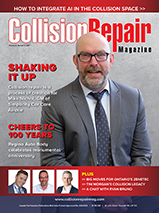By Brian Hough
For the collision industry, purchasing decisions
can be a multifaceted challenge. In addition to the immense amount of research
required to outfit facilities with the necessary equipment, tools and gear to
keep staff working safely and efficiently, comes the immense challenges of
overseeing high-flow inventories. This is further complicated by the fact that
shops often deal with parts from many different suppliers. For those looking
for easy ways to improve their business model, purchasing and supply chain
management are often rife with inefficiencies. The most important thing for
shop owners to remember before rushing to enact improvements is to be
aware of the difference between tactical and strategic sourcing.
Where tactical sourcing is reactive, with a procurement procedure built around responding to short term needs, strategic sourcing orients itself around making decisions that improve fiscal and logistical positions going forward. It may not take a genius to figure out which one works best for bodyshops, but it can be difficult to escape the vortex of short-term thinking.
Here are five ways to ensure your procurement policies are strategic for the long term:
1. Don’t Fear the Data
All businesses thrive when data is diligently collected, but few individuals will, as an instinct, be diligent about doing data entry. Product cost effectiveness, supply-chain inefficiencies and post-purchase support reliability and are key ingredients to making any major purchase for any business. Tracking all this raw data may seem useless—or overwhelming—but today’s management suites are capable of turning them into on-the-fly analytics reports. The analysis is only as good as the data available. Where it is missing, decision-makers must make choices on assumptions rather than educated guesses.
2. Invest in Supplier Relations
While the importance of maintaining good customer and insurer relations is often talked about, the importance of building up rapport with a broad network of suppliers is often left out of conversations. There is no quick route to achieving this kind of relationship. It requires consistent effort over the long term. Learn about and weigh your suppliers to make sure their strategies align with your own. Understand as much as you can about your supplier’s operational processes so that you can fully articulate their systems with yours. Also, let them understand your business. Working with suppliers to develop collaborative, solution-based partnerships rooted in the specifics of each firm’s position will help you avoid short-termism.
Do you pursue drawn-out negotiations? It might work once, but the supplier, having sunken more time than expected for diminished returns, may not be as eager to bring new opportunities first. Finding a way to work with suppliers to cut costs and serve the strategies of both parties will always yield better outcomes in the long run. When relationships become toxic, move on. Most will work with you to amicably resolve issues—at times as simple as integrating invoicing systems—saving both parties important time, money and labour.
3. Track Your Indirect Costs
Indirect costs are best described as the costs you probably aren’t thinking of when considering the collision industry—namely paper, copier maintenance, custodial services and telecom to name a few. These are easy to overlook when you’re thinking about global markets or making strategic decisions about an auction, but the reality is that given how often money is spent on these items, they add up. Moreover, the fact that they are often overlooked means that inefficiencies can accrue in a way that they don’t with direct costs that are reviewed with far greater frequency and depth. They can often end up being the figurative couch cushion that you haven’t turned over in a while, only to find a stash of forgotten change underneath.
4. Market Research
A purchasing expert is well situated to scout out new technologies and anticipate market shifts by maintaining close relationships with suppliers. While staying ahead of the curve by identifying and sourcing new and innovative solutions can be a fulltime job in and of itself, wise procurers remember that suppliers aren’t just sources of business but sources of information.While in a business that often punishes shops for making poor predictions about where the market is changing, the firms that have the strongest purchasing procedures are the ones with the purchasing teams that know how to best use their networks as the canary in the coalmine for potential trials and opportunities ahead.
5. Follow Through on Monitoring Purchases
Award your business and start moving on to the next decision, eager to keep the momentum going. In fact, that isn’t even a terribly short-sighted approach. The faster you can make good decisions, the more good decisions you can make.
But, while it is always necessary to keep moving forward, it is also important to keep track of what you have learned from every decision. Monitoring and keeping a close eye on how suppliers’ products fare in the actual marketplace and how willing they are to address technical issues after transactions will give you a leg up in future selections. This is harder than it sounds. For many purchasing managers, their work rarely takes them to the shop-level beyond confirming arrivals, installations and troubleshooting management.
Sure, some procurement managers do an exceptional job, but, according to statistics recorded by Collision
Repair magazine’s Buyer’s Guide,
more than three quarters of shop procurers do not conduct reviews of equipment performance
unless they are requested by shop staff. The
‘unless there is a
problem, there is
no need to look for one’ attitude is
a classic example of
stick one’s head in the sand
and should be avoided at all cost—anyone who
buys equipment should know
how it is being used.
As anyone who has managed supplier relations will know, much of the equipment used on the shop floor will be advertised for uses that may be completely ignored in reality. In such cases, either the team is unaware of these features, or the team has a more efficient way of doing them.





















